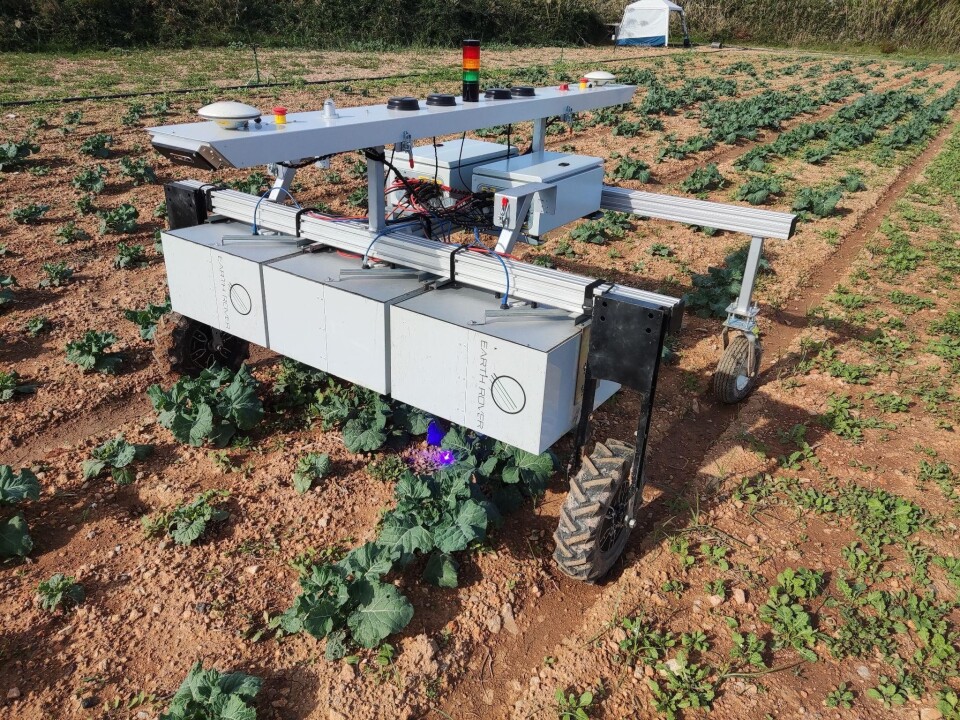Food supply chains are not getting any simpler, and if you’re a manufacturer, processor, distributor, or compliance professional, you know exactly how many moving parts are involved. This article breaks down how real-time data can help you stay in control, reduce guesswork, and make decisions faster and with more confidence.
We will explore practical ways real-time data supports compliance tracking, quality assurance, procurement planning, and traceability, essentials for any food business under pressure to be faster, leaner, and more transparent.
In the sections below, we unpack how real-time data is reshaping the food supply chain and what steps your organisation can take to adopt a more integrated, data-led approach.
What is supply chain visibility – and why does it matter?
Supply chain visibility (SCV) is about the ability to track and monitor every stage of the supply chain in real time. It includes understanding where raw materials come from, knowing how products are manufactured, stored, and transported, and when and how they reach their final destination.
Why is this so important? Well, because the supply chain is no longer just a back-end function. Consumers and regulators alike may demand transparency, especially around food safety, sustainability, and sourcing ethics. At the same time, companies are under pressure to deliver faster, reduce waste, and respond to unexpected disruptions, from weather events to global pandemics.
So, whether you're a compliance manager ensuring product integrity, or a food safety officer tracing allergens, having real-time visibility into your supply chain has become a non-negotiable as the expectations placed on supply chain professionals today are increasing. This is where supply chain digital transformation comes into play, digitising processes to provide immediate access to critical information.
The shift to real-time data – from lag to live
Real-time supply chain data enables businesses to monitor processes as they happen. IoT sensors can track temperatures in refrigerated transport. APIs pull live updates from supplier systems. Cloud-based dashboards visualise performance metrics in seconds rather than days.
This shift is more than just technological innovation. It should be a cultural shift too. Businesses must learn to move from reactive decision-making to proactive, data-led decision making. A day's delay in identifying a disrupted delivery route or a faulty production batch can cost thousands in losses and damaged hard-earned trust.
Real-time data on supply chain efficiency helps organisations avoid errors, react faster, and make smarter choices across procurement, production, distribution, and retail. For example, if a supplier experiences a delay, you can immediately pivot to an alternative source, reducing downtime and keeping shelves stocked.
Core benefits of real-time supply chain data
- Proactive risk prevention: Spot and address potential issues before they escalate.
- Inventory optimisation: Reduce overstock and understock through live inventory transparency. Keeping you constantly aware of what you have and what you need.
- Demand forecasting accuracy: Adjust forecasts based on up-to-the-minute market and sales data.
- Improved customer satisfaction: Meet delivery promises and minimise delays.
- Enhanced partner collaboration: Share data securely with suppliers and partners to streamline workflows.
- Faster decision-making and agility: Empower teams with real-time information to adapt quickly.
Common barriers to implementation
Despite its clear benefits, implementing real-time data systems is not always that straightforward. Many organisations face internal and external challenges, such as:
- Data silos and fragmented systems: Legacy platforms often store information in isolated formats, preventing full supply chain visibility.
- Lack of integration: Without APIs or middleware, real-time data from partners, logistics, and production may not feed into a unified system.
- Data quality issues: Inaccurate or inconsistent data leads to mistrust in systems and faulty decision-making.
- Skills gaps: Some teams lack the digital fluency or analytical skills needed to interpret complex dashboards or manage new tools.
That said, none of these are dealbreakers. With the right tools and a clear roadmap, digital supply chain transformation is possible. This begins by training staff, reviewing IT infrastructure, and adopting platforms like Foods Connected that are purpose-built to help food businesses centralise, manage, and act on their supply chain data effectively.
Real-time data in action
It is already being used across the food industry to solve tangible challenges, here are examples of specific Foods Connected tools already delivering real-time value across the supply chain:
- Supplier compliance and approvals: Companies can monitor supplier status in real time, ensuring all documentation, accreditations, and risk assessments are up to date. With tools like live supplier mapping and approval tracking, teams gain better control over potential risks and disruptions.
- Remote auditing and non-conformance tracking: By using real-time audit scheduling and incident reporting tools, businesses can carry out on-site or remote audits, log non-conformances, and take immediate corrective actions, without delays.
- Procurement and forecasting insights: Tools such as E-Forecast and E-Order Manager over what products are needed, where, and when, helping procurement teams make informed, timely decisions.
These examples show how to improve supply chain visibility in practical, measurable ways using available technology. It is no longer about theory, it’s about making real-time data part of your everyday supply chain toolkit.
Building a real-time, data-driven supply chain
To unlock these benefits, organisations must take a strategic and structured approach, try this:
- Audit your current data flows: Map out where data comes from, how it moves, and where gaps exist.
- Integrate with live data sources: Connect your systems with IoT sensors, supplier APIs, and logistics platforms.
- Visualise insights via dashboards: Use user-friendly platforms that allow teams to spot trends and act fast.
- Align stakeholders and governance: Ensure everyone understands the data being shared, and establish protocols for use.
- Ensure compliance and cybersecurity: As more data moves in real time, maintaining data privacy and regulatory compliance is crucial.
Supply chain management platforms like Foods Connected offer reporting tools to support this journey. These solutions help food businesses transform raw data into actionable insight, streamlining compliance, communication, and planning across all key supply chain activities.
Why data visibility = Competitive advantage
Real-time visibility gives companies a genuine edge in the marketplace. Businesses with full visibility can:
- Operate leaner, with optimised inventory and lower overheads
- Reduce waste and shrinkage
- Meet compliance requirements with ease
- Improve sustainability through smarter sourcing and transport
- Build trust with customers and partners through transparency
In short, supply chain optimisation with real-time data leads to a more resilient and future-ready operation. As more companies digitise, falling behind in this space is no longer an option. Real-time is becoming the new baseline.
Conclusion
Today’s food supply chains are dynamic, high-pressure environments. Having access to real-time data is certainly helpful, but it’s also a key driver of better outcomes. From compliance and traceability to efficiency and service, live insights help you act with clarity and confidence when it counts most.
Foods Connected provides tools that turn supply chain data into action. Our platform helps teams track, manage, and optimise key operations, from supplier approvals to quality checks, within one cohesive system. Book a demo to see how it all comes together.
.png)
Foods Connected
Foods Connected is an award-winning cloud-based software platform that simplifies the food industry supply chain, optimising spend and unlocking the data businesses need to excel. Fast to roll out and even easier to use, our tools help our customers manage and report on traceability, product lifecycle management, procurement, quality control and sustainability.
Stay up to date
Stay up to date
Browse Posts
- December 2025
- November 2025
- October 2025
- September 2025
- August 2025
- July 2025
- June 2025
- May 2025
- April 2025
- March 2025
- February 2025
- January 2025
- December 2024
- November 2024
- October 2024
- September 2024
- August 2024
- July 2024
- June 2024
- May 2024
- April 2024
- March 2024
- February 2024
- January 2024
- December 2023
- November 2023
- October 2023
- September 2023
- August 2023
- July 2023
- June 2023
- May 2023
- April 2023
- March 2023
- December 2022
- November 2022
- October 2022
- September 2022
- August 2022
- July 2022
- June 2022
- May 2022
- April 2022
- March 2022
- February 2022
- January 2022
- December 2021
- November 2021
- October 2021
- August 2021
/Blog%20Headers/Blog%20header_the%20role%20of%20real%20time%20data.jpg)

/Blog%20Headers/shutterstock_1927957907%20(1).jpg)
/Blog%20Headers/shutterstock_1845178195%20(2).jpg)
/Blog%20Headers/shutterstock_2133827717%20(1).jpg)
/Blog%20Headers/shutterstock_2473376713.jpg)
/Blog%20Headers/shutterstock_2247276303.jpg)
.png)
.png)



/Blog%20Headers/Blog%20header_SEO_How%20AI%20detects%20food%20fraud.jpg)

/Blog%20Headers/Blog%20header_How%20AI%20is%20making%20supply%20chains%20more%20efficient.jpg)
/Blog%20Headers/FSMA%202024%20update%20Blog%20header.jpg)
.jpg)
/Blog%20Headers/shutterstock_2480556949.jpg)
/Industry%20Voices/Industry%20Voices%20live/Ruth%20Brown%20-%20M+S/Industry%20voices_Ruth%20Brown%20Blog%20Header.png)

/Blog%20Headers/Supply%20chain%20resilience%20Blog%20Header%20.jpg)